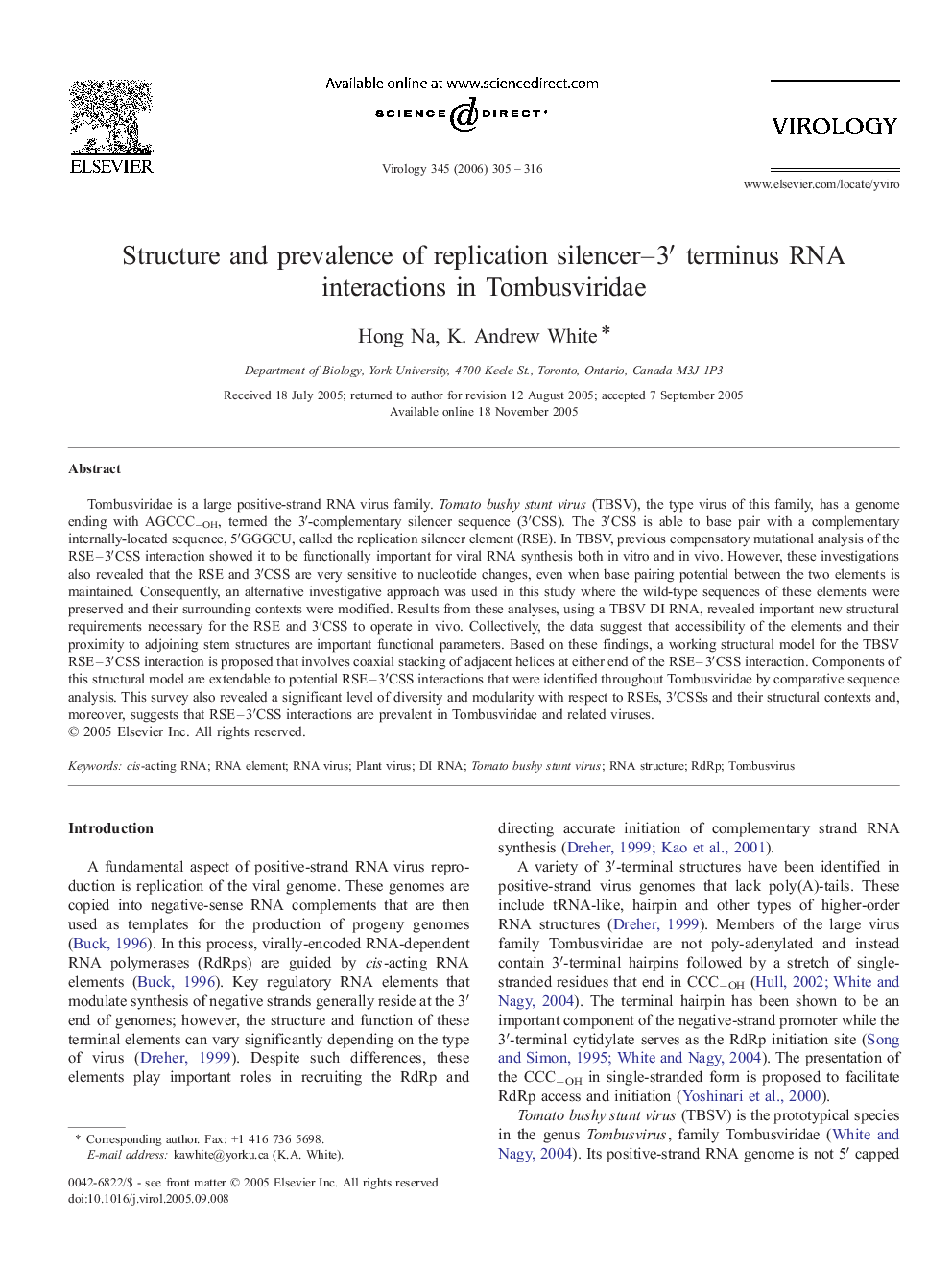| Article ID | Journal | Published Year | Pages | File Type |
|---|---|---|---|---|
| 3427004 | Virology | 2006 | 12 Pages |
Tombusviridae is a large positive-strand RNA virus family. Tomato bushy stunt virus (TBSV), the type virus of this family, has a genome ending with AGCCC−OH, termed the 3′-complementary silencer sequence (3′CSS). The 3′CSS is able to base pair with a complementary internally-located sequence, 5′GGGCU, called the replication silencer element (RSE). In TBSV, previous compensatory mutational analysis of the RSE–3′CSS interaction showed it to be functionally important for viral RNA synthesis both in vitro and in vivo. However, these investigations also revealed that the RSE and 3′CSS are very sensitive to nucleotide changes, even when base pairing potential between the two elements is maintained. Consequently, an alternative investigative approach was used in this study where the wild-type sequences of these elements were preserved and their surrounding contexts were modified. Results from these analyses, using a TBSV DI RNA, revealed important new structural requirements necessary for the RSE and 3′CSS to operate in vivo. Collectively, the data suggest that accessibility of the elements and their proximity to adjoining stem structures are important functional parameters. Based on these findings, a working structural model for the TBSV RSE–3′CSS interaction is proposed that involves coaxial stacking of adjacent helices at either end of the RSE–3′CSS interaction. Components of this structural model are extendable to potential RSE–3′CSS interactions that were identified throughout Tombusviridae by comparative sequence analysis. This survey also revealed a significant level of diversity and modularity with respect to RSEs, 3′CSSs and their structural contexts and, moreover, suggests that RSE–3′CSS interactions are prevalent in Tombusviridae and related viruses.
